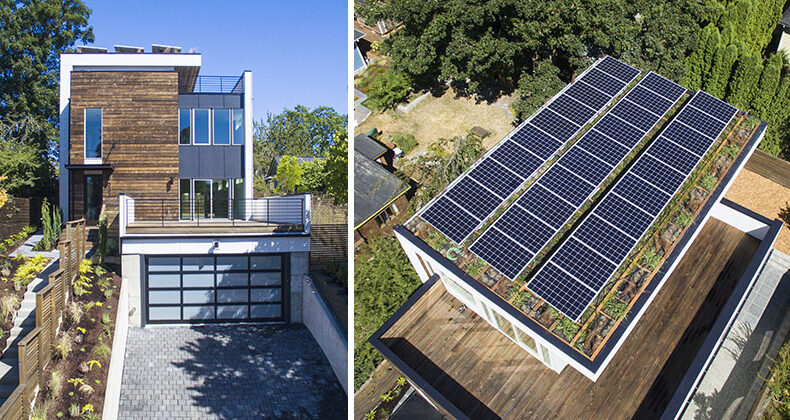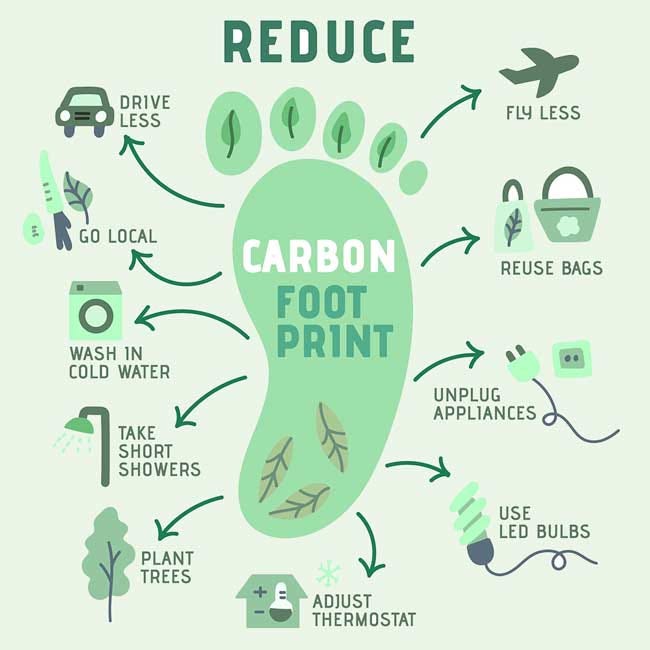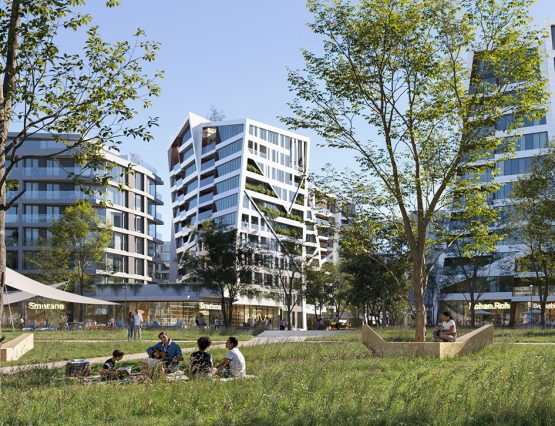
The Blueprint for Modern Sustainable Living: Integrating Timeless Wisdom with Future-Forward Practices
Introduction: Redefining Our Relationship with the World
In an era of rapid technological advancement and global connectivity, the call for a more sustainable way of life has never been more urgent. But what does “Sustainable Living” truly mean? It’s a concept that extends far beyond recycling bins and reusable shopping bags. At its core, it represents a profound shift in mindset—a holistic philosophy that harmonizes our personal well-being with the health of our planet. It’s about creating a lifestyle that is not only environmentally responsible but also personally fulfilling, financially sound, and socially conscious. This comprehensive guide explores the multifaceted nature of sustainable living, drawing inspiration from time-honored traditions and integrating them with modern innovations. We will delve into how this approach impacts every facet of our lives, from Home Improvement and Health & Wellness to Personal Finance and Community Living. This is not about deprivation; it’s about abundance—an abundance of health, connection, and purpose. It’s a journey toward a more intentional existence, where every choice, big or small, contributes to a resilient and thriving future for all.
Section 1: The Sustainable Home: An Ecosystem of Conscious Choices
The modern home is often our first and most impactful environment. Transforming it into a bastion of sustainability involves rethinking everything from the materials we use to the resources we consume. This approach marries ancient principles of living in harmony with nature with cutting-edge technology to create spaces that are both healthy and efficient.
Rethinking Shelter: Natural Materials and Passive Design
For centuries, human dwellings were constructed from locally sourced, natural materials like clay, stone, wood, and bamboo. These materials are not only biodegradable and have a lower carbon footprint, but they also offer superior natural insulation and air quality. Today, there’s a resurgence in these practices within modern Interior Design and architecture. Rammed earth walls, cork flooring, and reclaimed wood are becoming popular choices for their aesthetic appeal and eco-credentials. For example, a home with thick, well-insulated walls made from natural materials can significantly reduce the need for artificial heating and cooling, a concept known as passive design. By orienting a house to maximize sun exposure in the winter and minimize it in the summer, and by using natural ventilation, homeowners can slash energy bills by 20-50%. This is a prime example of where Eco-Friendly Living meets practical Budget Tips.
The Circular Household: From Zero Waste to DIY Empowerment
The principle of a circular economy—where waste is designed out of the system—is fundamental to sustainable living. A Zero Waste lifestyle aims to send as little as possible to landfills. This starts with mindful consumption: buying less, choosing products with minimal packaging, and prioritizing durability over disposability. A great starting point is the kitchen, where food scraps can be composted to enrich garden soil for Urban Gardening, reducing methane emissions from landfills. This practice directly supports Meal Planning and growing Healthy Recipes at home. Furthermore, embracing DIY Projects is a cornerstone of this philosophy. Instead of buying chemical-laden cleaners, one can create effective Natural Cleaning solutions from vinegar, baking soda, and essential oils. This not only reduces plastic waste and exposure to toxins but also fosters a sense of self-sufficiency and creativity, key elements of Personal Development.

Section 2: Holistic Well-being: Nurturing Self and Planet
True sustainability is not just about the external environment; it’s deeply intertwined with our internal landscape. A lifestyle that is gentle on the planet is often one that promotes profound personal Health & Wellness, encompassing physical vitality, mental clarity, and emotional balance.
Nourishment from the Ground Up
The modern food system is a significant contributor to carbon emissions and environmental degradation. A sustainable approach to nutrition emphasizes local, seasonal, and plant-forward diets. Supporting local farmers’ markets or participating in a Community Supported Agriculture (CSA) program reduces “food miles” and fosters a connection to where our food comes from. This shift in Nutrition News is not just ecological; it’s a boon for our health. Fresh, minimally processed foods are richer in nutrients and free from the preservatives found in many packaged goods. Integrating more plant-based meals can lower one’s carbon footprint significantly—a vegan diet can reduce an individual’s food-related emissions by up to 73%. This approach encourages mindful eating and new culinary adventures, making Food & Cooking a joyful act of self-care and planetary care.
Mindful Consumption and Mental Health
The relentless pursuit of material possessions is a major driver of environmental strain and, paradoxically, a source of personal anxiety. Minimalism and Decluttering are powerful antidotes. By consciously choosing to own less, we free up not only physical space but also mental and emotional energy. This practice aligns perfectly with Mindfulness and Meditation, as it encourages us to find joy in experiences rather than things. An organized, clutter-free environment can reduce stress and improve focus, which is particularly beneficial for achieving Work-Life Balance, especially in a Remote Work setting. Instead of impulse buys, we can invest in hobbies, Reading, or attending Cultural Events that enrich our lives without costing the earth. This intentionality is a form of Stress Management, promoting a calmer, more centered state of being and improving Sleep Health.
Section 3: The Socio-Economic Dimensions of Green Living
Sustainable living is not a solitary pursuit. It thrives on community connection and requires a re-evaluation of our financial habits. By building resilient local economies and making conscious financial choices, we can create a powerful ripple effect of positive change.
Financial Planning for a Sustainable Future

A common misconception is that a green lifestyle is expensive. While some upfront investments, like solar panels or an electric vehicle, can be costly, the long-term savings are substantial. The core tenets of sustainability—consume less, waste less, and reuse more—are inherently aligned with sound Personal Finance. Simple habits like brewing coffee at home, repairing clothes instead of replacing them (a nod to Sustainable Fashion), and performing basic home maintenance can save thousands of dollars annually. For larger financial decisions, Financial Planning can include ethical or ESG (Environmental, Social, and Governance) investing, which directs capital toward companies committed to sustainable practices. This approach allows your money to grow while supporting a future you believe in, a key topic in Investment News.
The Power of Community and Social Impact
Human beings are social creatures, and a truly sustainable lifestyle recognizes the importance of strong, interconnected communities. Local initiatives like tool-lending libraries, community gardens, and skill-sharing workshops reduce collective consumption while building valuable Relationships. Volunteering for local environmental groups or social causes strengthens the fabric of society and provides a powerful sense of purpose. This focus on Community Living creates resilience, as neighbors learn to rely on and support one another, whether through sharing Parenting Tips, co-organizing events, or checking in on elderly residents to promote Aging Well. This collaborative spirit is the heart of Social Impact, demonstrating that our individual actions, when combined, can create systemic change.
Section 4: Practical Integration: Best Practices and Recommendations
Adopting a sustainable lifestyle is a journey, not a destination. It’s about making gradual, intentional changes rather than striving for unattainable perfection. Here are some practical recommendations and common pitfalls to avoid.

Leveraging Technology for Good
While we draw wisdom from the past, we can leverage modern tools to enhance our efforts. Technology for Home offers numerous solutions. A Smart Home thermostat learns your schedule and optimizes heating and cooling, cutting energy use by 10-15%. Energy Star-rated appliances use significantly less electricity and water. Apps can help you track your carbon footprint, find local recycling centers, or identify sustainable brands. Even Home Security systems now offer energy-saving modes. The key is to use technology as a tool for efficiency and awareness, not as another avenue for mindless consumption.
Best Practices and Avoiding Pitfalls
-
Start Small: Don’t try to change everything at once. Pick one area, like reducing food waste or switching to Natural Beauty products, and master it before moving on. Small wins build momentum.
-
Beware of Greenwashing: Many companies use misleading marketing to appear more eco-friendly than they are. Look for third-party certifications (like Fair Trade, USDA Organic, or B Corp) to verify claims.
-
Focus on Progress, Not Perfection: The goal of Zero Waste is an ideal. The reality is that we live in a world not designed for it. Celebrate your efforts and don’t let minor setbacks derail your commitment. The 80/20 rule applies here—focus on the changes that make the biggest impact.
-
Educate and Share: One of the most powerful things you can do is share your journey. Discuss what you’re learning with friends and family. Offer to teach a skill, like composting or mending. Positive advocacy is more effective than judgment.
Conclusion: A Call to Intentional Living
Sustainable living is a rich tapestry woven from threads of ancient wisdom, modern innovation, personal well-being, and community action. It is an invitation to live more deeply and intentionally. By re-evaluating our relationship with our homes, our bodies, our finances, and our communities, we move beyond a model of mere consumption toward one of conscious creation. This path is not about sacrifice but about rediscovery—of skills, of connection, of purpose. It’s about understanding that the choices that are best for the planet are often the very same choices that lead to a healthier, happier, and more meaningful life. The journey begins with a single, conscious step. What will yours be?
Archives
- December 2025
- November 2025
- October 2025
- September 2025
- August 2025
- October 2023
- September 2023
- August 2023
- July 2023
- June 2023
- May 2023
- April 2023
- March 2023
- February 2023
- January 2023
- December 2022
- November 2022
- October 2022
- September 2022
- August 2022
- June 2022
- May 2022
- April 2022
- March 2022
- January 2022
- December 2021
- November 2021
- October 2021
- August 2021
- November 2020
- July 2020
- May 2020
- April 2020
- March 2020
- August 2018
- July 2018
- June 2018
- April 2018
- March 2018
Categories
- Age Groups
- AI/ML
- Alternative Medicine
- Animal Health
- Animal Husbandry
- Animals
- Anti-Aging
- Architectural Design
- Auditory Science
- Augmented Reality
- Automation
- Babies
- Baby
- Beauty & Skincare
- Biohacking
- Biomechanics
- Book Reviews
- Breastfeeding
- Budgeting
- Business
- Cardiovascular Health
- Career Advice
- Career Development
- Career Growth
- Cats
- Chess
- Chronobeauty
- Circular Economy
- Cleaning Tips
- Cloud Computing
- Cognitive Health
- Cognitive Performance
- Cognitive Science
- Community
- Community Building
- Community Engagement
- Community Living
- Computer Vision
- Consumer Guides
- Consumer Trends
- Container Gardening
- Content Analysis
- Content Non-Technical
- Content Strategy
- Cosmetic Chemistry
- Cultural Events
- Cycling
- Data Analysis
- Data Engineering
- Data Science
- Design Psychology
- Developer Productivity
- Diet
- Diet
- Digital Identity
- Digital Media
- Digital Wellbeing
- DIY Projects
- Dogs
- Engineering Culture
- Entertainment News
- Environmental Impact
- Environmental Science
- Equity Compensation
- Exercise
- Exercise Science
- Exercise Technique
- Exotic Pets
- Fall Gardening
- Family
- Family Health
- Family Life
- Fashion Business
- Fashion Industry
- Fashion News
- Fashion Tech
- Financial Analysis
- Financial Planning
- Flooring Maintenance
- Food
- Food Psychology
- Food Safety
- Food Tech
- Functional Fitness
- Functional Training
- Future Of Work
- Garden Care
- Garden Maintenance
- Gardening Tips
- Greece
- Greek
- Greek Food
- Gymnastics
- Hardware Engineering
- Health
- Health And Wellness
- Health Informatics
- Health Science
- Health Tech
- Healthcare Management
- Healthy Eating
- Healthy Recipes
- Holistic Health
- Holistic Wellness
- Home & Living
- Home Decor
- Home Financing
- Home Health
- Home Improvement
- Home Organization
- Horticulture
- Identity Management
- Industrial Design
- Industry Analysis
- Infant Nutrition
- Infrastructure Management
- Ingredient Deep Dive
- Integrative Medicine
- Interior Design
- Internet of Things
- Internet of Things (IoT)
- Invalid Request
- Investment Strategies
- Investment Strategy
- IoT
- Kids
- Leadership Development
- Learning Strategies
- Lifestyle
- Lifestyle Brands
- Lifestyle News
- Lifestyle Optimization
- Literary Criticism
- Literature
- Logistics Management
- Material Science
- Materials Science
- Meal Planning
- Media Analysis
- Meditation
- Mental Health
- Mental Performance
- Mental Wellness
- Miami
- Miami Food
- Mind And Body
- Minimalism
- Mobile Development
- Neuroscience
- No Applicable Categories
- Nutrition
- Nutrition News
- Operating Systems
- Operational Resilience
- Opinion
- Organization Tips
- Outdoor Living
- Over 40
- Over 50
- Over 60
- Parenting
- Parenting
- Parenting Strategies
- Performance
- Personal Development
- Personal Finance
- Personal Growth
- Personal Productivity
- Pet Care
- Pet Safety
- Philosophy
- Politics
- Productivity
- Protein
- Psychology
- Psychology of Space
- Reading Culture
- Real Estate Investment
- Recipes
- Regulatory Compliance
- Remote Work
- Renovation Planning
- Resource Management
- Responsible Pet Ownership
- Retail Strategy
- Robotics
- Science
- Seafood
- Seasonal Gardening
- Security
- Self-Care
- Skincare Science
- Skincare Trends
- Sleep
- Sleep Health
- Smoothies
- Social Impact
- Soft Skills
- Soil Health
- Spatial Computing
- Spatial Design
- Stress Management
- Supplements
- Sustainability
- Sustainability Science
- Sustainable Engineering
- Sustainable Fashion
- Systems Engineering
- Tax Optimization
- Tax Strategy
- Travel
- Travel News
- Travel Safety
- Travel Tips
- Trend Analysis
- Uncategorized
- Urban Planning
- Veggie
- Virtual Events
- Volunteering
- Wealth Management
- Wearable Technology
- Wellness
- Wellness Technology
- Work-Life Balance
- Workplace Culture
- World
- Writing
- Writing Skills
- Yoga News
- Zero Waste




Leave a Reply